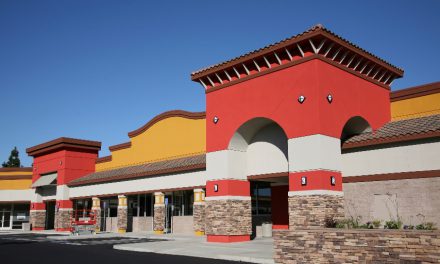A commercial property is a significant investment. With the substantial sum of money involved, investors need to know they’re making the correct choice.
Investors who systematically evaluate a location before they continue with a purchase will feel confident in their final decision. Specific indicators provide a clear picture of a property’s value, and through an analysis of these indicators, the risks are reduced. Commercial property investors will benefit from an understanding of the warning signs, learning which properties to pursue and which to ignore.
What are those warning signs, and what should investors keep in mind? Which indicators aid in the evaluation of locations for new commercial properties? This article details the top five factors investors should consider as they move forward.
1. Transportation
The proximity of the commercial property to public transportation or highways will impact its accessibility. Clients and employees should have no difficulty visiting the location. Depending on the city, either major interstates or public transit options are essential, and an investor should make sure they’re close.
Investors need to assess the walkability of the area as well. When a tenant occupies the commercial property, will their employees have the ability to walk to a local restaurant for lunch? If the building is within walking distance of these amenities and other helpful businesses, it’s a good sign.
2. Building Class
A piece of commercial real estate will fall into one of three categories, defined by several different factors. Investors should review the “building class” of their property of interest, and use the information to guide their final purchase. Building classes fall into one of three types:
- Class A: Newly built or extensively renovated buildings in prime locations with easy access to major amenities.
- Class B: Older buildings which rent at around 30% lower rates than Class A buildings. These typically require some type of capital investment.
- Class C: Out-of-date structures with high vacancy rates, often in poor locations. The most affordable option among the categories.
Investors who are getting started with commercial real estate can get a good idea of a building’s value by looking at its class. Clearly, the higher the class, the better the property in terms of location and amenities. Still, Class A properties require more capital than Class B or Class C.
3. Job Growth
It’s advisable to seek economically stable areas for commercial investments. When investors check the job market in an area — looking at the number of jobs, type of jobs, average salary, et cetera — they’ll have a stronger understanding of the area as a whole. Job growth is a positive indicator.
At the same time, investors should reconsider their decision to purchase a property in economically depressed areas. If they notice a general lack of maintenance, failing infrastructure or other signs of disrepair, it’s usually best to search elsewhere. While these locations may see rehabilitation, it’s not a safe bet.
4. Market Overview
Investors should research the market they intend to invest in before they proceed with a purchase. When they have a grasp on the fundamentals, like the competition, vacancy and rents, they’ll fare far better in making smart investments which yield high returns. That said, it’s somewhat complex and takes practice.
For example, risk assessment is different in commercial real estate as compared to residential real estate. The success of two residential properties next to each other is often similar, while two adjacent commercial properties could fluctuate independently. Understanding these variations is crucial.
5. Price-to-Rent Ratio
The price-to-rent ratio serves as an effective measure for the evaluation of a location for its potential profitability. In terms of calculating the rate, investors should divide the median price by the median yearly rent. A higher price-to-rent ratio means the market is worse for real estate investments.
As context, the dramatic increase in the price-to-rent ratio that led up to the 2008 and 2009 housing market crash was a red flag. On the other hand, a lower price-to-rent proportion is a green light. It’s a promising sign, something investors should take note of when they’re examining a location.
Location Matters for Commercial Properties
A commercial property is a significant investment. Investors will have a higher degree of security in their purchase if they consider the five factors above. When they look at transportation, building class, job growth, the market and the price/rent ratio in their evaluation, they’ll reduce the overall risk of their investment.
While it’s impossible to account for every unique variable, investors should do what they can to discern the potential of their property of interest. Only then can they feel confident as they continue, with a positive attitude and an optimistic outlook.
Related article:















Your points are all very important in evaluating a commercial property. Location, location, location is the tried and true mantra here. Second, savvy investors seek qualified, rated or credit-worthy tenants. In a multi-tenant property, the investment risk is mitigated (vs. a single tenant property) with different lease expirations that provide some safeguard against a single tenant simply electing to move at lease expiration or a biz failure (bankruptcy).